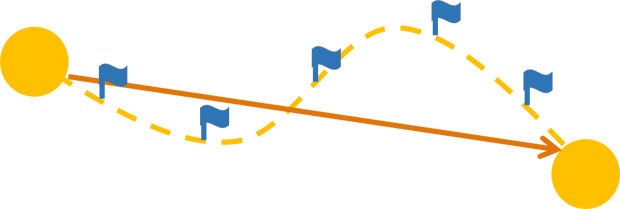
We
all do things differently based on our individual experiences and observations.
This is where providing a step-by-step guide to performing and checking off a
task could come in handy.
After a long day at work, Anna is ready to unwind at home. However, as she enters the kitchen, she finds that the washed dishes are still oily, and some laundry has shrunk because they were put in the dryer when they were not supposed to. Just the previous week, Anna had told her family members to help out with these household chores, and they did… but why aren't they done well?
This is an example of variation occurring when changes occur. In this case, it is change occurring in her family when she asked them to help out with the household chores. Anna even experiences this at work, where there are systems introduced to better organise documents, but it is not always effectively done.
How could she use Quality Improvement (QI) tools to help her family members adapt to the changes and manage variation in their workflows?
Let's take the example of washing dishes. Here are 5 change concepts that Anna could apply to ensure that everyone cleans the dishes properly:
1. Standardisation
We all do things differently based on our individual experiences and observations. Different family members may have their own ways and standards of washing dishes, resulting in variations. This is where providing a standardised step-by-step guide to performing and checking off the task could come in handy.

An example of standardised steps to clean dishes that Anna’s household could follow.
2. Develop operation definitions
Even with standardised steps, individuals could execute these steps differently because of misinterpreted definitions. If Anna realizes this, she can define specific operational terms. The term ‘clean’ can be defined as ensuring that the dish is free of oil and stains.

Anna could create a list of operational definitions, or points to note for everyone in the family.
3. Stop tampering with the standardized workflow
Reducing tampering of the standardised workflow can maintain high quality results. Anna can ensure this by making it easier for her family members to follow the workflow. For example, to prevent them from placing wet or only partially dried dishes into the cupboard when there is not enough space on the drying rack, she can buy a bigger drying rack. This would prevent shortcuts such as not drying the dishes properly before they are returned to the shelf.
Taking shortcuts and deviating from the standardised route or workflow may be faster, but could cause us to miss important checkpoints in the process.
4. Develop contingency plans

Having multiple contingency plans can prevent Anna and her family from being caught off-guard during unexpected situations.
5. Improve predictions
Finally, how could Anna prevent the sponges from running out in the first place? She could predict it! It is common to use data to improve predictions, and she could apply this to the timely replenishment of sponges. If sponges are standardised to be changed once every 2 weeks, this data can be used to predict their replenishment. This may even assist in her budget planning for the family groceries.

Keeping track of when the dishwashing sponges were replaced helps Anna predict when it next needs to be replenished.













 Get it on Google Play
Get it on Google Play